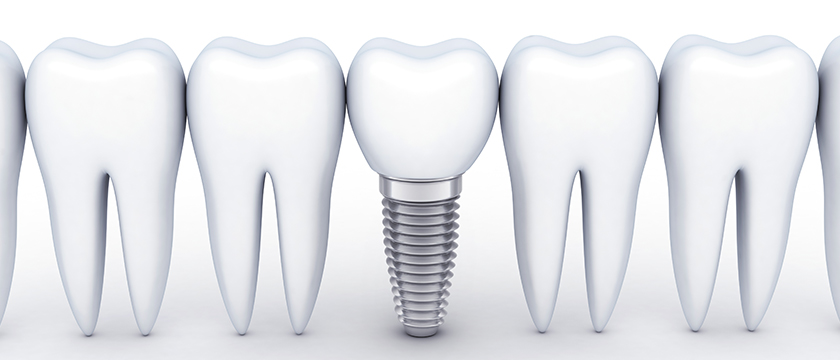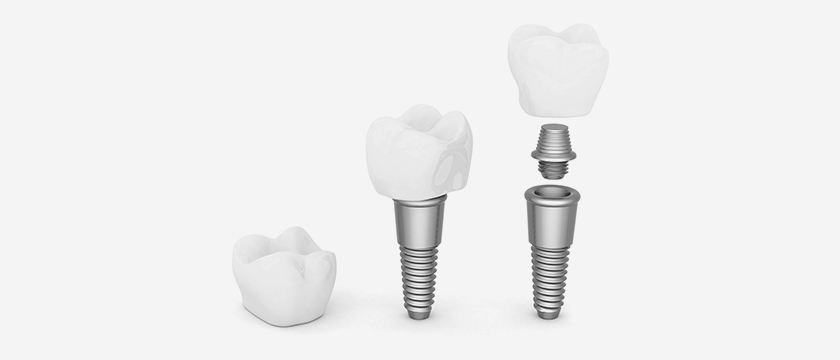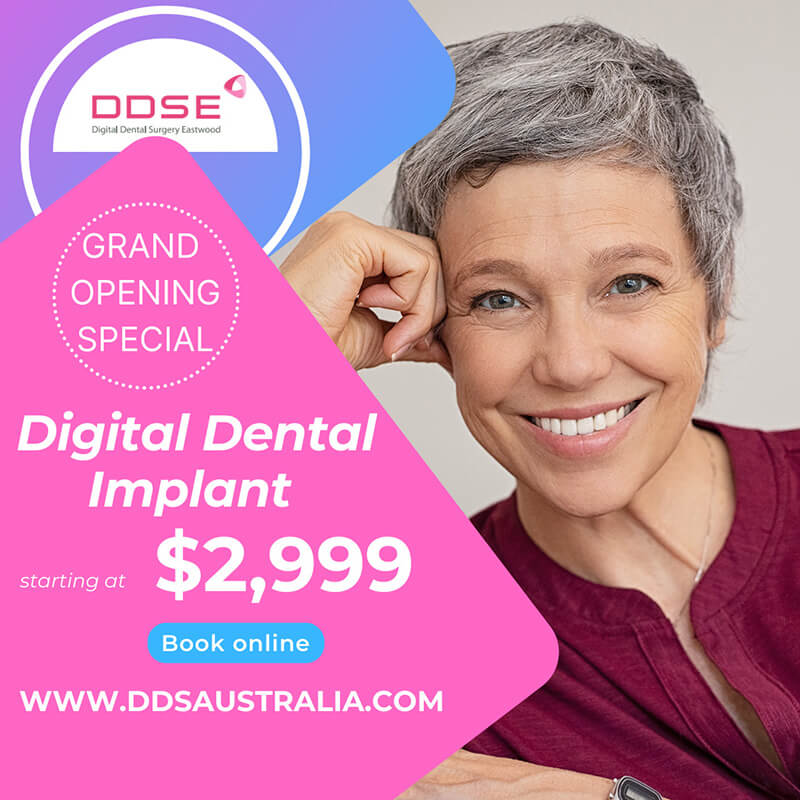The dental implants market is huge. In fact, globally, it’s expected to reach US$ 5.7 billion by 2026.
More and more people are choosing dental implants to restore their smiles, and this is largely due to the advantages they provide over other forms of tooth replacement, such as safety, effectiveness, durability, and natural-looking teeth.
The rise of CAD/CAM (computer-aided design/computer-aided manufacturing) technology in implant dentistry has meant that the production of precise and durable dental implant components has become simpler and more cost-effective.
Moreover, many dental surgeries including DDSS/DDII, are now utilising CAD/CAM technology to facilitate flapless surgeries which are quicker, more comfortable, and help to preserve the soft tissues surrounding the teeth.
Where previously a conventional dental implant could take up to 100 minutes to place, now it can be completed in less than 20.
So what exactly are dental implants?
A dental implant is a surgical fixture that’s placed into the jaw and left for a few months to fuse with the surrounding bone. It replaces the tooth root of the missing tooth and, in turn, helps to support a replacement tooth (dental crown) or bridge.
Having a dental implant placed into your jaw is the closest thing to having your natural tooth back, since it stands on its own, has great stability, and doesn’t affect neighbouring teeth.
The majority of dental implants are manufactured from titanium because of its biocompatibility, which means that the body won’t regard it as a foreign body and reject it.
Why would you need a dental implant?
The function of tooth replacement in dentistry is to replace form and aesthetics, and dental implants tick both of these boxes.
But did you know that implants can be used to replace just one tooth, multiple teeth or all of your teeth?
Dental Implants – The Options
Factors for a dentist to consider when a patient requests dental implants are:
- the location of the missing tooth or teeth
- the quantity and health of the bone in the area of the jaw where the tooth is missing
- the patient’s health
- cost and,
- patient preference

While the primary role of dental implants is to replace missing teeth, implants can also be used to support a removable denture and prevent it from slipping.
For instance, patients who have lost all of their teeth due to gum disease or decay can benefit from a full-arch implant solution using just 4 or 6 implants depending on the individual’s needs.
On the day of the procedure, the implants are placed and immediately after digital impressions are taken so that a temporary set of ‘teeth in a day’ can be fabricated. Once these have been fitted, you’re good to go with a smile.
It may take several months for your bone to fuse with the implants giving us time to mill and fabricate your permanent teeth.
Once your implants are stable, your temporaries are removed, and you’ll be fitted with your brand-new teeth giving you a smile to be proud of. How easy is that!
What’s the procedure for getting dental implants?
Getting implants of any kind starts with a consultation to assess if you’re a suitable candidate. It also involves a CBCT scan which provides our dentists with a 3-dimensional image of your teeth and jaw structure. This, in turn, helps enable virtual surgery and pre-surgery treatment planning.
Scans and treatment planning are crucial for a quicker, precise, and successful surgery.
Here at DDSS/DDII digitalising the dental implants procedure provides numerous advantages for our patients.

- Virtual impressions meaning fewer takes and less inconsistency
- Flapless surgery (keyhole surgery for teeth) can be as short as 15-20 minutes
- More comfortable surgery for the patient
- Faster healing time
- Greater accuracy and better long-term stability
- Fewer dental visits
How dental implants are done?
The procedures for conventional dental implants and digital implants (using DIO digital navigation implant surgery) are quite different.
Conventional implants require an incision to be made into the gum, exposing the jaw bone where the tooth is missing.
A hole is then drilled into the bone and the implant placed. The gums are then stitched back together and left for several months for the bone to fuse with the implant.
Then, a few months later, the patient has to undergo another short surgery.
The gum is opened back up to expose the implant and the abutment is attached. A further period of healing is needed before the implant can be topped with a dental crown.
This can mean a slower recovery and more risk of infection, bleeding, and swelling.
Alternatively, the DIO Navi system is similar to having keyhole surgery. Computer surgical guides are used to drill small holes through the gum and into the bone.
These take into account the depth and trajectory of the implant to ensure the safest position. The DIO implants are then placed into the holes.
Depending on the patient, they may also be able to benefit from the immediate placement of the abutment/crown.
Patients benefit from having no sutures, very little (if any) bleeding, less risk of infection, and shorter recovery time.
As a result, patients with diabetes, high blood pressure or a systemic disease who may not have been suited to conventional implants may now be able to restore their smiles with digital implants.
Dental Implant Cost
So now you know how dental implants are done, you’re probably wondering what the cost is likely to be.
It’s hard to give an exact dental implant cost because there are many different factors which can and do affect it.
Things such as the need for a bone graft, should you not have sufficient bone in which to place your dental implants, can impact the dental implant cost.
Then there’s the matter of how many teeth need to be replaced. As a rule of thumb the price increases in line with the number of implants placed, which is why there are options to replace a single tooth or several teeth.
In addition, there’s the 4/6 full arch implant solution we mentioned earlier, which can support full sets of dentures and provides an affordable full mouth dental implants solution.
Other factors affecting the dental implant cost include the type of dental implants used, the location of your dentist, whether you choose a dental implant specialist for your treatment, and any other treatments you may require prior to, or after, undergoing your implant-based restoration.
To find out more about the innovative DIO Navi system and how it can help restore your smile contact our digital dental surgery today at Gosford (02) 8294 8656 or Sydney (02) 8294 5812 . We’re currently offering a FREE implant consultation and CBCT scan, so don’t miss out.






